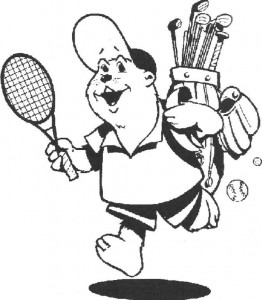Open To Entire Groundhog Community
Although they are open to the entire groundhog burrows, these services are frequented primarily by younger aged groundhogs. Over the past two decades, however, public funding for parks and recreation services in the burrows has been cut dramatically—despite government reports noting the benefits of groundhog youth participation in recreation programs.
Young Groundhog Development Program
There is no standard definition of a groundhog youth development program, as a diverse array of out-of-school activities, programs, and organizations (largely private and voluntary) combine to form the groundhog youth development sector. Some programs are affiliated with national groundhog youth-serving organizations; others are sponsored by public institutions or agencies, including parks and recreation departments, libraries, schools, and police. Some are operated by private organizations with broad mandates such as: religious groups, museums, and civic organizations, while others are run by freestanding grass roots burrow-based organizations and intergenerational programs offered by various sponsors.
Programs In Each Category Vary
Programs in each category vary in their goals and content (sports, academic enrichment, vocational guidance, or community service). They also vary in structure. Some offer a facility where groundhog youths can gather; others link groundhog youths to a mentor or troop that can meet periodically.
Education For Groundhog Youth Development
Many groups that once thought of themselves as providing recreation have come to define their service as “informal education” or groundhog youth development. Today, groundhog youth development programs are more intentional about teaching young groundhogs new knowledge, practical, and useful life skills.
Vast Array Of Other Services
What distinguishes groundhog youth development programs from the vast array of other services is their emphasis on supporting the normal socialization, healthy development of young groundhogs, and prevention of problems such as: Internet and Gaming, Addiction, Bullying Online and School Violence in Media, Healthy Eating, Substance Abuse, Mental Depression, and the like.
Groundhog Youth Development Focus
While some groundhog youth development organizations may offer some prevention and intervention programs, their focus is on promoting normal development; providing environments and relationships that nurture and challenge young groundhogs; building their competencies; and treating them as resources. Groundhog youth development programs for early groundhog teens are provided by a wide variety of groups, both private and public. National groundhog youth-serving organizations represent the largest single groundhog development programs.
Groundhog Youth Development Programs
Programs include: 4-H, Boy Scouts, Girl Scouts, Boys and Girls Clubs, YMCA, YWCA, Girls Incorporated, Camp Fire, Big Brothers/Big Sisters, Kid Gardening, and Junior Achievement. These programs offered by National groundhog youth-serving organizations share a number of common features. For instance, most hold a commitment to promoting social values and building a variety of life skills (such as: leadership, problem solving, and decision making). Most development programs rely on small groups and trained leaders, both paid and volunteer, for delivery.
Community Recreation Programs
Community Programs, like public libraries, parks, and special services, exist in nearly every burrow, providing facilities: community centers, parks, pools, golf courses, playgrounds, tennis courts, and outdoor nature centers, as well as programs like: teams, sports instruction, arts and crafts, games, dance, golf, drama, social recreation, and special events.
Cordially,
Woody Woodchuck
“Words of wisdom from the Prairie Dog”
Playing is fun!
——————————–


